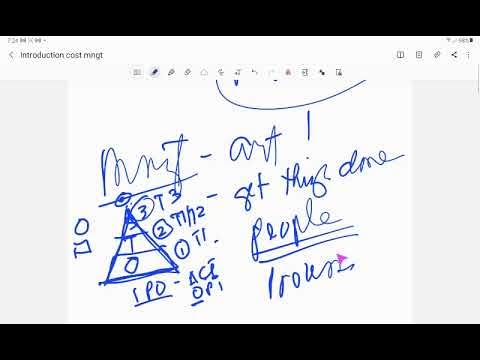Operations Strategy Part 1
Summary
TLDRIn this video, the concept of operation strategy is explained, focusing on the long-term planning and positioning of an organization to meet its goals. The script highlights different perspectives in formulating operation strategies, such as top-down, bottom-up, inside-out, and market-driven approaches. It emphasizes the importance of aligning strategic objectives with day-to-day operations and consulting with lower management to assess capabilities and constraints. The video stresses the need to consider the long-term goals, operational capabilities, and required resources when developing an operation strategy for a business.
Takeaways
- 😀 Strategy originates from the Greek word 'strategos', meaning 'to lead an army' and is about guiding a business towards long-term objectives.
- 😀 Operation strategy involves aligning the organization's operations with its environment to achieve long-term goals.
- 😀 Strategy should focus on long-term objectives, while day-to-day operational activities focus on short-term tasks.
- 😀 There are four main perspectives in operation strategy: top-down, bottom-up, inside-out, and market perspective.
- 😀 The **top-down** perspective involves top management setting strategic goals that trickle down to operational managers.
- 😀 The **bottom-up** perspective builds strategy by consulting operational managers about the organization's constraints and capabilities.
- 😀 The **inside-out** perspective focuses on leveraging operational capabilities and considering organizational constraints when developing strategies.
- 😀 The **market perspective** shapes the strategy based on customer requirements and market demands.
- 😀 Top-down and bottom-up perspectives are not opposites but mutually reinforce each other by aligning long-term goals with operational capacity.
- 😀 In aligning strategy with operations, organizations must regularly consult lower management to understand operational limitations and adjust objectives accordingly.
- 😀 Key questions in formulating an operation strategy include: What are the long-term goals? Are the operations capable of achieving them? What resources are required?
Q & A
What is the main topic discussed in this video?
-The video discusses operations strategy, explaining different perspectives used in formulating strategies for an organization's operations.
What is the origin of the term 'strategy'?
-The term 'strategy' comes from the Greek word 'strategos,' meaning to lead an army, and has been adapted to business to mean setting long-term objectives and planning how to achieve them.
How does 'strategy' differ from day-to-day business activities?
-Strategy involves long-term goals and planning, while day-to-day activities, known as operational activities, are short-term tasks that focus on running the business.
What is 'operation strategy'?
-Operation strategy is the planning or positioning of an organization relative to its environment to move the organization closer to its long-term goals, involving decisions on the role and objectives of operations.
What are the four main perspectives used in formulating operation strategy?
-The four main perspectives are: top-down, bottom-up, inside-out (resource perspective), and market perspective.
What does the 'top-down' perspective focus on?
-The 'top-down' perspective focuses on setting the strategic objectives of the entire organization, which are then passed down to guide operational decisions.
How does the 'bottom-up' perspective differ from the top-down perspective?
-The 'bottom-up' perspective builds the operation strategy based on input from operational units, focusing on day-to-day activities and aligning them with the organization's capabilities and constraints.
Why are the top-down and bottom-up perspectives considered mutually reinforcing?
-Both perspectives work together to ensure alignment between long-term strategic objectives and day-to-day operations. Top management sets broad goals, while bottom-up input ensures operations can meet those goals.
Can you provide an example of how the top-down and bottom-up perspectives work together?
-If the top management's goal is to increase market share, the operations team might be consulted to assess if the organization’s current capacity and resources can support this growth. If not, additional resources like labor and equipment may be needed.
What are the key questions to consider when defining an organization's operation strategy?
-The key questions are: 1) What is the long-term goal? 2) Is the operations capability able to achieve this goal? 3) What resources are needed to achieve these long-term objectives?
Outlines

This section is available to paid users only. Please upgrade to access this part.
Upgrade NowMindmap

This section is available to paid users only. Please upgrade to access this part.
Upgrade NowKeywords

This section is available to paid users only. Please upgrade to access this part.
Upgrade NowHighlights

This section is available to paid users only. Please upgrade to access this part.
Upgrade NowTranscripts

This section is available to paid users only. Please upgrade to access this part.
Upgrade NowBrowse More Related Video
5.0 / 5 (0 votes)





